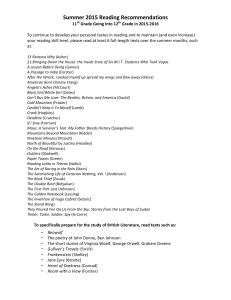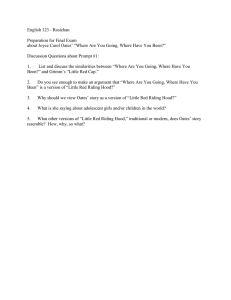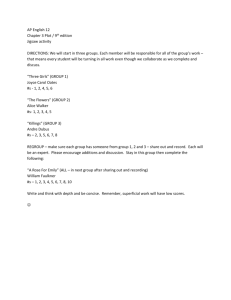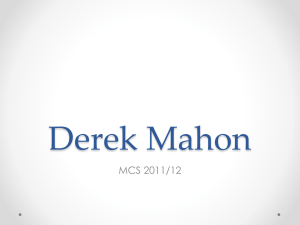Click Here for Joyce LaFontain's Review
advertisement
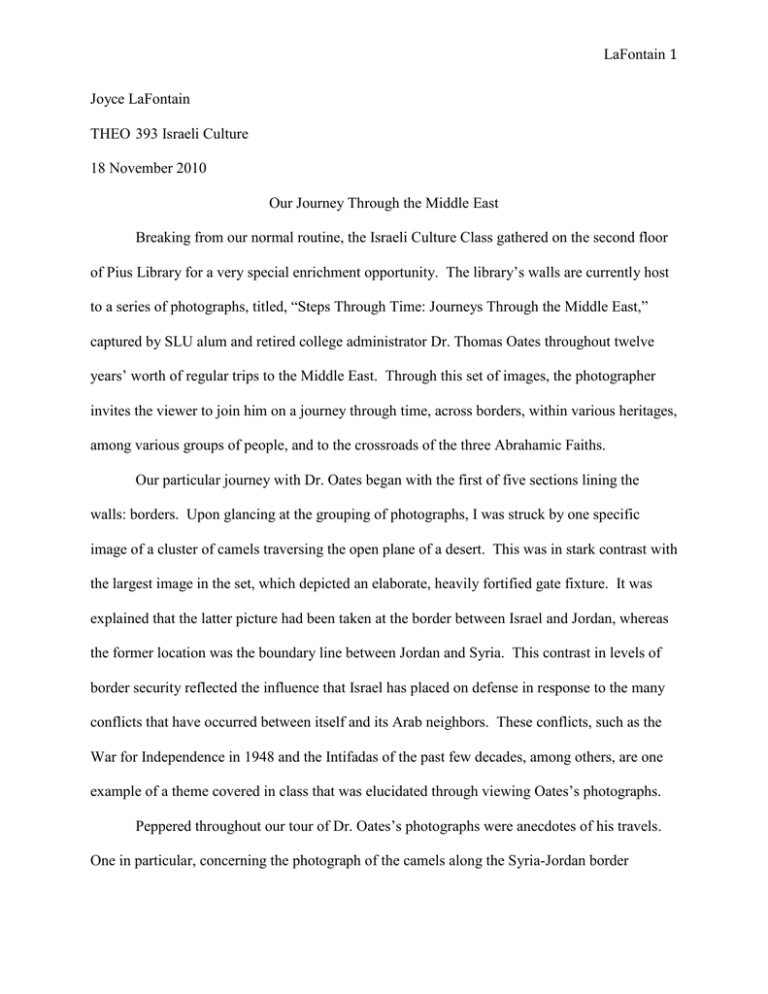
LaFontain 1 Joyce LaFontain THEO 393 Israeli Culture 18 November 2010 Our Journey Through the Middle East Breaking from our normal routine, the Israeli Culture Class gathered on the second floor of Pius Library for a very special enrichment opportunity. The library’s walls are currently host to a series of photographs, titled, “Steps Through Time: Journeys Through the Middle East,” captured by SLU alum and retired college administrator Dr. Thomas Oates throughout twelve years’ worth of regular trips to the Middle East. Through this set of images, the photographer invites the viewer to join him on a journey through time, across borders, within various heritages, among various groups of people, and to the crossroads of the three Abrahamic Faiths. Our particular journey with Dr. Oates began with the first of five sections lining the walls: borders. Upon glancing at the grouping of photographs, I was struck by one specific image of a cluster of camels traversing the open plane of a desert. This was in stark contrast with the largest image in the set, which depicted an elaborate, heavily fortified gate fixture. It was explained that the latter picture had been taken at the border between Israel and Jordan, whereas the former location was the boundary line between Jordan and Syria. This contrast in levels of border security reflected the influence that Israel has placed on defense in response to the many conflicts that have occurred between itself and its Arab neighbors. These conflicts, such as the War for Independence in 1948 and the Intifadas of the past few decades, among others, are one example of a theme covered in class that was elucidated through viewing Oates’s photographs. Peppered throughout our tour of Dr. Oates’s photographs were anecdotes of his travels. One in particular, concerning the photograph of the camels along the Syria-Jordan border LaFontain 2 sparked my interest. Mr. Oates remarked that just behind where he stood while capturing the image was once a site where Lawrence of Arabia, the world-renowned British officer famous for his role in the Arab Revolt during the First World War, had pitched his tent. This liaison with the region’s wealth of historical significance continued into the next sections of the exhibit, titled “Heritage” and “Sacred Sites.” As explained through Dr. Oates’s comments, the photographs in the sections highlighting the heritage and sacred sites of the region contained hints of the region’s several millennia of history. In the first grouping was an aerial portrait of an ancient city destroyed by an earthquake that had featured a sophisticated sewage and plumbing system. Also present was an image of Petra, a city built in the fifth century in what is now Jordan that features elaborate architectural structures carved into solid rock mountains. In the second was a picture of the Western Wall in Jerusalem, in which the rough-hewn building stones of the Solomon-era First Temple are stacked atop the carved stones utilized in the Second Temple, dating from the time of Christ. Also within the sacred sites section was a large portrait of the interior of the Hagia Sophia, a religious building constructed in the fourth century CE that served as both a mosque and a Christian church at various points in history. Oates prompted the group to reflect on the fact that Easter masses had occurred in the very spot depicted by the photograph over one millennium ago. The historical richness of the Middle East resounded throughout the photographs, and was the single most striking facet of the collection for me, personally. The historical aspect of the image series recalled the discussions that we had had in class regarding the historical aspects of the foundation of Israel. These discussions were centered on the fact that both groups that inhabit the area that is now the State of Israel claim a right to the land through reference to histories of being connected to the land since ancient times. The LaFontain 3 conclusion I drew from our class discussion, and even more strongly from Dr. Oates’s collection of photographs was that although the region boasts a truly unfathomably large amount of historical significance, the histories of the various groups inhabiting the land cannot be separated, but rather are intertwined in a profound and meaningful manner. This concept of shared experience and shared history in the Middle East has been, throughout my school career, a source of immense intellectual curiosity. This interest is fueled by meaningful opportunities such as the Israeli Culture class taught by Professor Lieberman and the tour of “Steps Through Time: Journeys in the Middle East” by Dr. Thomas Oates.

